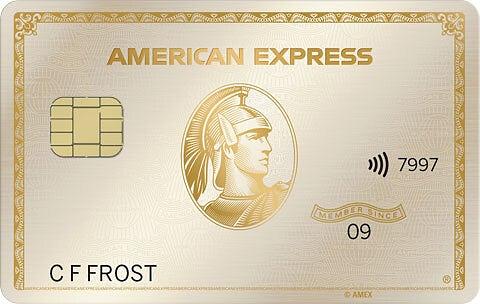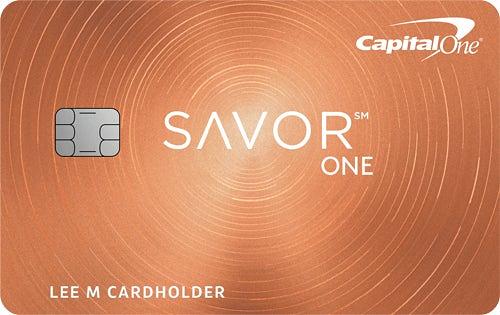The offers on this page are from advertisers who pay us. That may influence which products we write about, but it does not affect what we write about them. Here's an explanation of how we make money and our Advertiser Disclosure.
How to protect yourself against credit card fraud — and where you're most at risk
Carrying plastic can be much more convenient than cash. Plus, using a credit card for your purchases enables you to earn airline miles, points, or cash-back rewards.
But there are risks that credit card payments carry, too. The Federal Trade Commission received over 101,000 reports of credit card theft or fraud in 2023, a 35% increase from 2021.
Use this guide to take steps to protect yourself, take advantage of new technologies designed to shield against theft and fraud, and stay alert when you’re most at-risk.
How to protect yourself against credit card fraud
Your credit card has plenty of security features to keep your information safe during transactions. Always make sure you’re using the tools and technology available to you and regularly check for any unusual activity.
Set up fraud alerts: With most card issuers, you can set up alerts to receive emails or text messages when suspicious charges are made. If your information is stolen, these notifications allow you to take action quickly.
Use contactless or mobile payments: Contactless and mobile payments allow you to use your card without physically handing it over or swiping it, keeping your information more secure. Plus, these transactions rely on single-use codes to complete the purchase, rather than your account details — further protecting your information.
Review your statements: Review your credit card statements regularly (at least once per month) and alert your credit card company if you find any unauthorized transactions. The FTC states that, by law, you aren't responsible for more than $50 of unauthorized credit card transactions (though most card issuers offer zero-liability protection against these charges).
New fraud protections coming soon
Card issuers and networks are continually rolling out new safety measures. Visa recently announced new services that will soon help cardholders make safer transactions with credit cards. Set to be rolled out later this year, the updates include:
Expanded “tap to pay” options
Rather than manually inputting your card number when shopping online, adding cards to apps, and making person-to-person payments, you’ll be able to simply tap your card to your device instead.
Not only will these new abilities make it easier to manage your credit card digitally, but contactless payments use tokenization, which generates a code for the transaction rather than using your real card number. This adds another layer of protection from any potential scammers.
Payment passkey biometrics
Just like you use your fingerprint or facial recognition to log into your phone, you’ll be able to use similar biometrics when you shop online — without risking stolen account passwords.
You can protect yourself now and in the future by learning about your card’s latest features and any new security options available via your banking app or mobile wallet. Staying up-to-date can help you stay safe during any type of purchase.
Here’s more info about the different risks from a few common transactions:
5 places you're most at risk for credit card fraud
1. Restaurants and bars
Many credit cards offer valuable rewards on purchases made at restaurants, bars, or through takeout services like UberEats or DoorDash. For example:
American Express? Gold Card: Amex Gold card members will earn four Membership Rewards Points per $1 spent at restaurants worldwide, on up to $50,000 in purchases per calendar year, then 1X points after that (see rates and fees).
Capital One SavorOne Cash Rewards Credit Card: Cardmembers earn 3% cash back on dining.
DoorDash Rewards Mastercard?: With the DoorDash Rewards Mastercard, cardmembers can earn 4% cash back on DoorDash or Caviar orders.
However, paying your bill at a restaurant usually involves handing over a credit card to your server —giving someone an opportunity to copy your card details and use it to make unauthorized transactions.
Instead, use cash, mobile payments, or self-pay kiosks where available to avoid credit card theft. And always keep an eye on your credit card statements after you’ve been out to ensure there aren’t any unexpected purchases.
2. Non-bank ATMs
Many businesses have their own ATMs, giving customers a convenient way to take out cash. But non-bank ATMs aren't always secure. They're prone to skimming — meaning criminals install devices that capture users' details. They can then use that data to create fake cards and make unauthorized transactions.
Try to only use ATMs at a major bank and those located in brightly lit, public locations monitored by security cameras. The FBI has a helpful visual resource of what to look for when using a non-bank ATM.
Other tips include:
Inspect ATMs, point-of-sale terminals, and other card readers before using your card. If anything looks off — loose or damaged components — don’t use it.
Check the keypad before you put in your PIN to ensure it’s not a skimmer. The FBI recommends pulling the edges of the keypad to see if anything is loose or comes up.
When entering your PIN, cover the keypad to avoid being recorded by any hidden cameras.
Use debit and credit cards with chip technology versus a magnetic strip. According to the FBI, there are fewer skimmers in the U.S. that can steal your data via chip.
3. Fuel pumps
Like ATMs, fuel pumps are common targets for scammers. They can install skimming devices that copy your information, which they can later use to make fraudulent purchases.
If you have to use your credit card at a gas station, the FBI recommends choosing a well-lit place. When using the pump, look for any signs of tampering. Many gas stations place security tape around the payment panel; if the tape is torn, it has likely been altered by scammers.
If you aren't sure whether a pump is secure and don't have enough gas to make it to another station, take your card inside to pay the attendant directly rather than swiping your card at the pump.
4. Online retailers
Not all online retailers’ websites are encrypted or secure. Some look like reputable sites, but they collect customer information like passwords or credit card numbers using phishing.
According to the Federal Deposit ??Insurance Corporation (FDIC), “Scammers often create fake websites that are so similar to the sites of popular retailers, it easily tricks consumers into providing payment information.” The scammers steal your credit card information and your money, but you’ll never receive your purchase. The FDIC warns that scammers also develop fake apps, designed to infect your phone with malware, steal your personal information, and even lock you out of your device and hold it for ransom.
Even major retailers aren’t immune from being compromised by data breaches, so it's best practice to use virtual card numbers instead of your card's actual number. Many credit card companies — including American Express, Capital One, and Citi — offer virtual cards. These are one-time digital credit card numbers you can generate for an online purchase, protecting your real credit card information from theft.
If you encounter a phishing website or app disguised as a legitimate company, you can report it to the Federal Trade Commission (FTC).
5. Anywhere requiring peer-to-peer payments
Peer-to-peer (P2P) payment apps — such as Apple Pay or Cash App — are an increasingly popular way to send money to friends and family, and pay for goods or services. However, as the Federal Communications Commission notes, “Unlike traditional banks and credit cards, payment app services often lack the same fraud protections purchase.”
In other words, once the money is sent, it’s likely gone.
Only send payments to people you know and trust. The FTC explicitly warns consumers not to send or receive a P2P payment from someone they don’t know. But if there’s ever a case where you have no other options, choose a P2P app that can protect you from unscrupulous sellers by allowing you to send payment as a business transaction versus a personal transaction.
As well as reporting suspected scammers to the FTC, you can report fraud directly to the P2P companies:
Apple Pay: Submit a request for phone support
Cash App: Chat with support via app, or call 1-800-969-1940
PayPal: Submit a report online, or call 1-888-221-1161.
Venmo: Chat with support via app, submit a report online, or call 1-855-812-4430
Zelle: Submit a report online, or call 1-844-428-8542
This article was edited by Rebecca McCracken
Editorial Disclosure: The information in this article has not been reviewed or approved by any advertiser. All opinions belong solely to Yahoo Finance and are not those of any other entity. The details on financial products, including card rates and fees, are accurate as of the publish date. All products or services are presented without warranty. Check the bank’s website for the most current information. This site doesn't include all currently available offers. Credit score alone does not guarantee or imply approval for any financial product.


